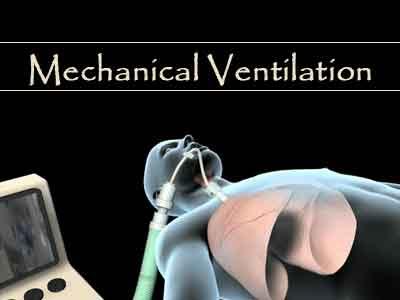- Home
- Editorial
- News
- Practice Guidelines
- Anesthesiology Guidelines
- Cancer Guidelines
- Cardiac Sciences Guidelines
- Critical Care Guidelines
- Dentistry Guidelines
- Dermatology Guidelines
- Diabetes and Endo Guidelines
- Diagnostics Guidelines
- ENT Guidelines
- Featured Practice Guidelines
- Gastroenterology Guidelines
- Geriatrics Guidelines
- Medicine Guidelines
- Nephrology Guidelines
- Neurosciences Guidelines
- Obs and Gynae Guidelines
- Ophthalmology Guidelines
- Orthopaedics Guidelines
- Paediatrics Guidelines
- Psychiatry Guidelines
- Pulmonology Guidelines
- Radiology Guidelines
- Surgery Guidelines
- Urology Guidelines
What to do when patient’s spontaneous breathing trial fails?

A new study published in the journal JAMA reports that among patients requiring mechanical ventilation in whom a spontaneous breathing trial had failed, early extubation to noninvasive ventilation did not shorten time to liberation from any ventilation.
Gavin D Perkins and associates conducted a multi-centered, randomized clinical trial to investigate among patients with difficulty weaning the effects of protocolized weaning with early extubation to noninvasive ventilation on time to liberation from ventilation compared with protocolized invasive weaning.
Read Also: Bag-mask ventilation fails to improve on endotracheal intubation in cardiac arrest (CAAM)
The study included adults who received invasive mechanical ventilation for more than 48 hours and in whom a spontaneous breathing trial failed between March 2013 and October 2016 from 41 intensive care units in the UK National Health Service. Follow-up continued until April 2017.
The study participants were randomized to receive either protocolized weaning via early extubation to noninvasive ventilation (n = 182) or protocolized standard weaning (continued invasive ventilation until successful spontaneous breathing trial, followed by extubation) (n = 182).
The primary outcome was the time from randomization to successful liberation from all forms of mechanical ventilation among survivors, measured in days, with the minimal clinically important difference defined as 1 day. Secondary outcomes were the duration of invasive and total ventilation (days), reintubation or tracheostomy rates, and survival.
The key study findings included are:
- The median time to liberation was 4.3 days in the noninvasive group vs 4.5 days in the invasive group.
- Competing risk analysis accounting for deaths had a similar result.
- The noninvasive group received less invasive ventilation (median, 1 day vs 4 days) and fewer total ventilator days (median, 3 days vs 4 days).
- There was no significant difference in reintubation, tracheostomy rates, or survival.
- Adverse events occurred in 45 patients (24.7%) in the noninvasive group compared with 47 (25.8%) in the invasive group.
Read Also: New guidelines for discontinuing mechanical ventilation in ICU
The study concluded that early extubation to noninvasive ventilation compared with protocolized invasive weaning with sequential pressure support reduction prior to extubation did not reduce the time to liberation from all forms of ventilation.
"Consistent with the protocol design, patients in the noninvasive ventilation group underwent extubation earlier and spent less time receiving invasive ventilation. Mortality rates, the requirement for reintubation or tracheostomy, and adverse event rates were not significantly different, ”write the authors.
For reference log on to 10.1001/jama.2018.13763

Disclaimer: This site is primarily intended for healthcare professionals. Any content/information on this website does not replace the advice of medical and/or health professionals and should not be construed as medical/diagnostic advice/endorsement or prescription. Use of this site is subject to our terms of use, privacy policy, advertisement policy. © 2020 Minerva Medical Treatment Pvt Ltd